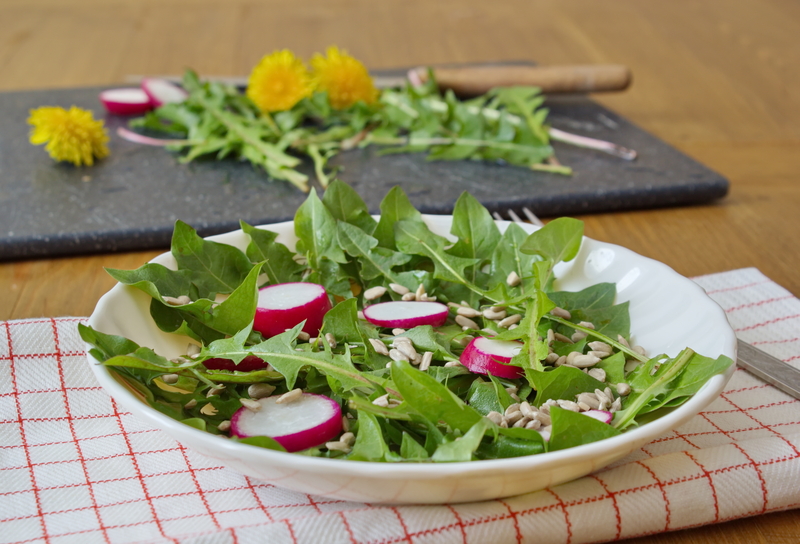Master the Art of Growing a Thriving Herb Garden
Posted on 29/09/2025
Master the Art of Growing a Thriving Herb Garden
Cultivating a herb garden at home can fill your kitchen with aromatic flavors, empower you with fresh ingredients, and even purify your environment. Whether you live in a sprawling countryside or a compact city apartment, nurturing herbs is a rewarding and accessible hobby. This comprehensive guide will walk you through the process of establishing, growing, and maintaining a thriving herb garden, ensuring you reap robust harvests all year round.
Why Start Your Own Herb Garden?
Growing your own herbs is more than just a pastime; it's a lifestyle shift. Here are a few compelling reasons to master the art of herb gardening:
- Freshness and Flavor: Homegrown herbs deliver unmatched taste and aroma compared to store-bought options.
- Health Benefits: Many herbs, including basil, parsley, and mint, are packed with vitamins and antioxidants that boost immunity and wellness.
- Cost-Effective: A single plant can yield more than you'd typically buy at the store, saving money in the long run.
- Eco-Friendly: Reduces packaging waste and carbon footprint by eliminating transportation of store-bought herbs.
- Therapeutic Value: Gardening has proven mental health benefits, reducing stress and enhancing mood.

Choosing the Right Herbs For Your Garden
The first step to a successful herb garden is selecting the right herbs. Consider your climate, available space, and culinary preferences. Some herbs are more resilient and better suited for beginners.
Top 10 Easy-to-Grow Herbs
- Basil: Perfect for Mediterranean and Asian dishes; grows well in warm, sunny spots.
- Parsley: Available in flat-leaf and curly varieties; great for garnishes and salads.
- Mint: Prolific and easy, but best grown in containers to contain its vigorous spread.
- Cilantro: Essential for salsas and curries; prefers cooler weather.
- Chives: Onion-flavored leaves ideal for salads, soups, and omelets.
- Rosemary: Hardy, fragrant herb that thrives in well-drained soil.
- Thyme: Versatile and drought-tolerant, excellent for stews and roasts.
- Sage: Savory herb with soft leaves, perfect for poultry and sausage dishes.
- Dill: Used for pickling and seafood; loves full sun.
- Oregano: Classic Italian flavor for sauces and pizzas.
As a tip, grow herbs you use the most in your daily cooking. This maximizes their value and ensures you care for them regularly.
Planning Your Herb Garden Layout
Proper planning is the foundation of any thriving herb garden. Whether you select indoor containers or an outdoor plot, arranging your plants intentionally encourages healthy growth and simplifies maintenance.
Indoor Herb Garden Ideas
- Windowsill Herb Garden: Small pots fit perfectly on sunny kitchen windowsills, making harvesting easy.
- Vertical Herb Walls: Space-saving vertical planters allow you to grow multiple herbs in compact spaces.
- Hydroponic Herb Kits: These self-watering systems are ideal for tech-savvy gardeners and guarantee fresh herbs year-round.
Outdoor Herb Garden Designs
- Raised Beds: Improve drainage and soil quality while keeping weeds at bay.
- Border Edging: Use herbs as decorative borders throughout your vegetable or flower gardens.
- Herb Spiral: A visually appealing, water-efficient way to grow a variety of herbs with differing moisture needs.
Not sure where to start? Begin with a container herb garden, which is portable and manageable, especially for beginners.
Essential Requirements for a Thriving Herb Garden
1. Sunlight
Most herbs crave sunlight. Aim for at least 6 hours of direct sun daily. East- or south-facing windows work well indoors, while outdoor gardeners should select open, sunny spots. Some varieties, like mint and parsley, will tolerate partial shade.
2. Soil and Drainage
Well-drained, fertile soil is crucial for herbs. Amend heavy clay or sandy soil with compost to improve nourishment and structure. For container gardens, use high-quality potting mix with added perlite or sand to prevent waterlogging.
3. Watering
Consistent, moderate watering helps herbs establish strong roots. Water when the top inch of soil feels dry. Avoid overwatering; soggy roots can cause fungal diseases and root rot, particularly in pots.
4. Spacing
Give each herb enough room to grow. Crowded plants struggle for nutrients and light, becoming prone to diseases. Check seed packets or plant labels for recommended spacing. Generally, space herbs 8-12 inches apart.
5. Fertilizing
Most herbs are light feeders. Over-fertilizing results in lush foliage but diminished flavor. Apply a slow-release organic fertilizer or a diluted liquid feed about once a month during peak growing season.
How to Plant Your Herb Garden
Growing from Seeds
Starting herbs from seeds is economical and satisfying. Use seed trays or small pots with moist, seed-starting mix. Sow seeds according to package instructions, gently pressing them into the soil. Cover lightly, mist, and keep warm and bright until they sprout. Thin out seedlings to prevent overcrowding.
Using Transplants or Cuttings
For a quicker start, buy young herb plants from nurseries or propagate cuttings from mature plants. Gently remove each plant from its pot, loosen roots, and transplant into prepared soil. Water well and keep moist until established.
Daily Care for a Flourishing Herb Garden
Consistency is key to herb garden success. Here's how to nurture robust plants:
- Water Regularly: Stick your finger into the soil to check moisture levels. Water early in the morning to minimize evaporation and fungal risk.
- Mulch: Add a thin layer of organic mulch (like straw or bark) to outdoor beds to suppress weeds and retain soil warmth.
- Pruning: Pinch off flower buds early to promote leaf development and prevent bitterness, especially in basil and mint.
- Harvesting: Harvest often by snipping stems just above a leaf pair; frequent harvesting encourages bushier, healthier growth.
- Pest Control: Inspect regularly for pests like aphids and caterpillars. Handpick or use organic insecticidal soap if needed.
Troubleshooting Common Herb Growing Problems
Even experienced gardeners face challenges. Here's how to solve typical problems and keep your herb patch productive:
- Yellowing Leaves: Often a sign of overwatering or poor drainage. Let the soil dry out before watering again and ensure pots have drainage holes.
- Leggy Growth: Insufficient light causes spindly, weak stems. Move your herbs to a sunnier spot or invest in grow lights for indoor gardens.
- Mildew & Fungal Diseases: Increase air circulation, water early in the day, and never let foliage stay wet overnight.
- Pest Infestations: Inspect under leaves regularly and introduce beneficial insects like ladybugs or use natural remedies as needed.
Tip: Rotate herbs and refresh the soil every season to prevent soil-borne diseases and nutrient depletion.
Harvesting and Storing Your Homegrown Herbs
Knowing when and how to harvest herbs is crucial. Always pick leaves in the morning after dew has dried but before the sun becomes too intense, as this preserves the essential oils and aromatic potency.
- Use Sharp Scissors: Cut just above a set of leaves or nodes, encouraging regrowth.
- Never Harvest More Than One-Third: Avoid stressing the plant by leaving sufficient foliage for photosynthesis.
- Drying Herbs: For winter storage, dry herbs by hanging them in bunches in a warm, well-ventilated area or use a dehydrator.
- Freezing: Chop fresh herbs and freeze them in olive oil in ice cube trays for ready-to-use portions.
Expanding Your Herb Garden: Advanced Tips
Once you've mastered basic care, expand your herb gardening expertise:
- Companion Planting: Grow herbs like basil with tomatoes or chives with carrots to improve growth and deter pests.
- Succession Planting: Stagger sowing times for a steady supply, especially for annuals like cilantro and dill, which bolt quickly in heat.
- Propagation: Experiment with root cuttings and division for perennial herbs like oregano and thyme.
- Herbal Teas: Grow chamomile, lemon balm, and mint for fresh, soothing infusions.

Creative Uses for Your Homegrown Herbs
A flourishing herb garden opens doors beyond culinary use:
- Homemade Beauty Products: Infuse bath salts with lavender or create refreshing face mists with rosemary.
- Aromatic Bouquets: Decorative and fragrant bundles brighten up indoor spaces.
- Herbal Remedies: Try traditional tinctures, salves, and teas for natural wellness.
- Gifts: Share fresh or dried herbs as thoughtful, sustainable presents.
Conclusion: Enjoy the Bounty of Your Thriving Herb Garden
Learning to grow a robust herb garden at home is a gratifying journey. With the right care and knowledge, your small patch or windowsill can transform into a lush oasis bursting with flavor, fragrance, and vitality. By following the steps above, from choosing easy-growing herbs to effective harvesting and creative usage, you'll not only master the art of herb gardening but enrich your lifestyle and kitchen for years to come.
Start your herb garden today, and let the green, aromatic rewards inspire your cooking, health, and home.

